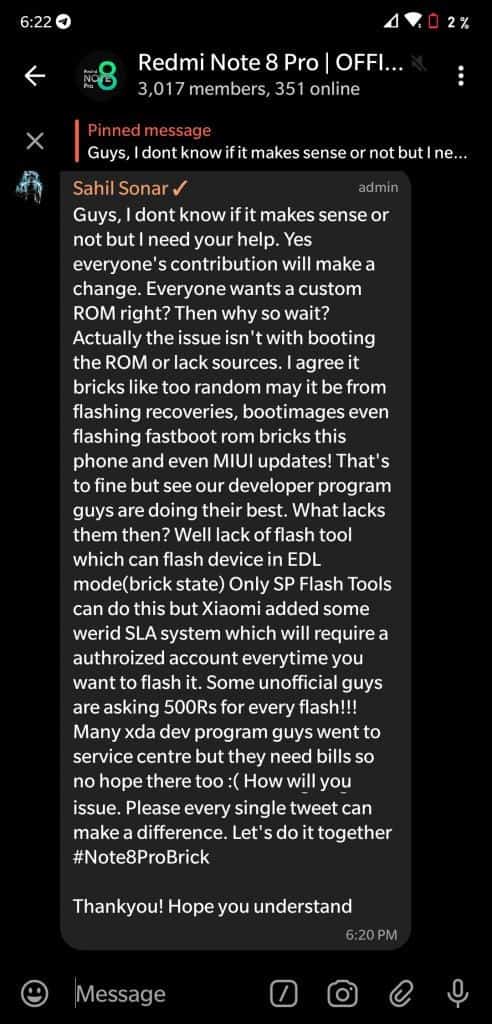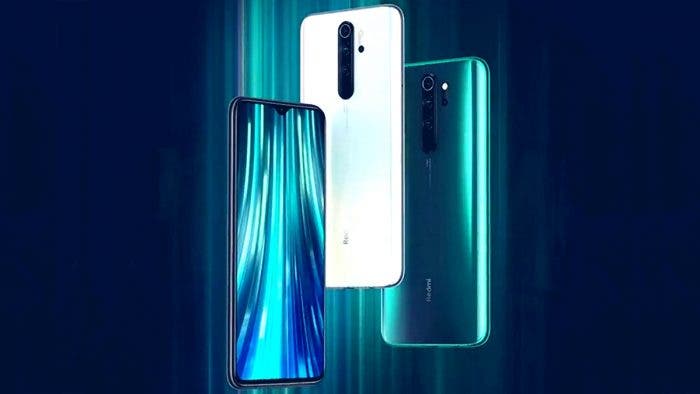Back in September, Xiaomi released the Redmi Note 8 along with the Redmi Note 8 Pro. We don’t need to say how the Redmi Note 8 Pro was much more impressive than its vanilla counterpart. It was the first smartphone in the market to ship with a 64MP camera solution, and also was the first to debut with MediaTek’s gaming chipset Helio G90T. It was a surprising move from Xiaomi which has been sticking with Qualcomm’s Snapdragon chips since the Redmi Note 5. The answer is simple, Xiaomi believes that the gaming chipset is the only capable of delivering an outstanding performance at this price range. Despite the controversies, the Redmi Note 8 Pro quickly became one of the most popular handsets in the series.
“The gaming smartphone came with Android 9 Pie, but may receive Android 10-based MIUI 11 early in 2020”
Some users however, remained reluctant to chose a MediaTek chipset due to the lack of Custom ROM support. For that reason, Xiaomi is trying to prove that Redmi Note 8 Pro also is a good option for users who prefer Custom firmware. The company released kernel sources of the smartphone few time after its launch. After that, the firm has sent out 10 units of the smartphone for recognized developers from XDA community.
This has brought a light of hope to the hearts of many users who want to enjoy a vanilla Android experience. However, hope has been quickly consumed by the difficulties. The problem is, the Note 8 Pro bricks so easily whenever you try to flash a custom recovery, mod or even MIUI updates via recovery. This can happen when development is giving its first steps, however, the major problem is that developers and users doesn’t have a proper way to unbrick their smartphones.
“The Note 8 Pro is a powerful smartphone… when it isn’t bricked.”
Unlike Qualcomm Snapdragon devices that can have entire firmware packages flashed via fastboot commands, the Redmi Note 8 Pro requires MediaTek’s SPFlashTool software. The platform is capable, however, in the specific case of Note 8 Pro it requires an authorized Xiaomi account. For that reason, developers and regular users that doesn’t have this kind of account can’t do anything to recover their bricked smartphones. While Xiaomi remains quiet about the situation, users with authorized accounts are charging for the service of re-flashing the stock ROM. It’s the only way for users and developers to bring smartphones back to its regular state.

This whole situation is making impossible for the developers to build Custom ROMs. After all, the process of development requires the attempt, and sometimes that attempt results in mistakes. However, even small errors in the Redmi Note 8 Pro can result in a bricked smartphone. The situation is really troublesome when it happens to users who doesn’t have any experience in flashing ROMs. The popular MIUI branch – MIUI.EU – has dropped support for the Redmi Note 8 Pro due to bricking issues.
Hey @Xiaomi @XiaomiIndia @RedmiIndia @manukumarjain please look into brick issue of note8pro, make it developer friendly, give us something so we won’t be needing authorised account for SP flash tool every time the phone bricks. #Note8ProBrick https://t.co/pdazRQ7xux
— Santosh Yadav (@santoshhh000) December 17, 2019
Today, several Redmi Note 8 Pro users took to Twitter to demand a solution from Xiaomi. The easiest and obvious way to solve this situation is to provide a SPFlashTool version that doesn’t require authorized Mi account. Xiaomi is yet to make an official statement. Hopefully it won’t take much time. Meanwhile we can keep following the #Note8ProBrick hashtag on Twitter.




Unfortunately, in the Android development community, it is a very common misconception that MediiaTek powered smart devices receive less development support than Qualcomm powered devices. This oftentimes discourages Android fans from buying a MediaTek device. As a long-time maintainer for CyanogenMod custom ROMs at XDA (for a number of Motorola, LG and Huawei devices), and now for LineageOS since the dissolution of CyanogenMod, I can confirm firsthand that MediaTek powered devices get just as much — and sometimes more — development support than Qualcomm devices. In fact, the MediaTek SoC platform provides for a much more integral porting process than Qualcomm, Intel, Exynos, NVidia, and Spreadtrum platforms. The ease in porting applies not only to custom Android ROMs, but also custom recoveries, kernels, framework mods, etc. Moreover, due to the universal SP Flash Tool interface available for MediaTek devices, hard bricking is nearly impossible.
After doing a bit more in-depth research on development support as a whole, you are totally correct Shane. Greetings, by the way. I’ve followed your work ever since your days of porting CM 12.1 to the Moto E LTE and Moto G (3rd Gen).
I was actually a bit surprised myself at the numbers. At XDA, the largest community of Android developers and enthusiasts on the planet, MediaTek devices collectively receive nearly double the development support than their Qualcomm counterparts. This is primarily due to the large volume of Qualcomm devices (low range devices manufactured by LG, Alcatel, etc.) that cannot be OEM unlocked, rooted or otherwise modified. With MediaTek powered devices (BLU and Coolpad come to mind), SP Flash Tool permits rooting and customization to devices even with the bootloader fully locked down. Personally, I prefer development on Qualcomm and Exynos powered devices; however, MediaTek devices provide developers with a much more flexible and integral platform as a whole.